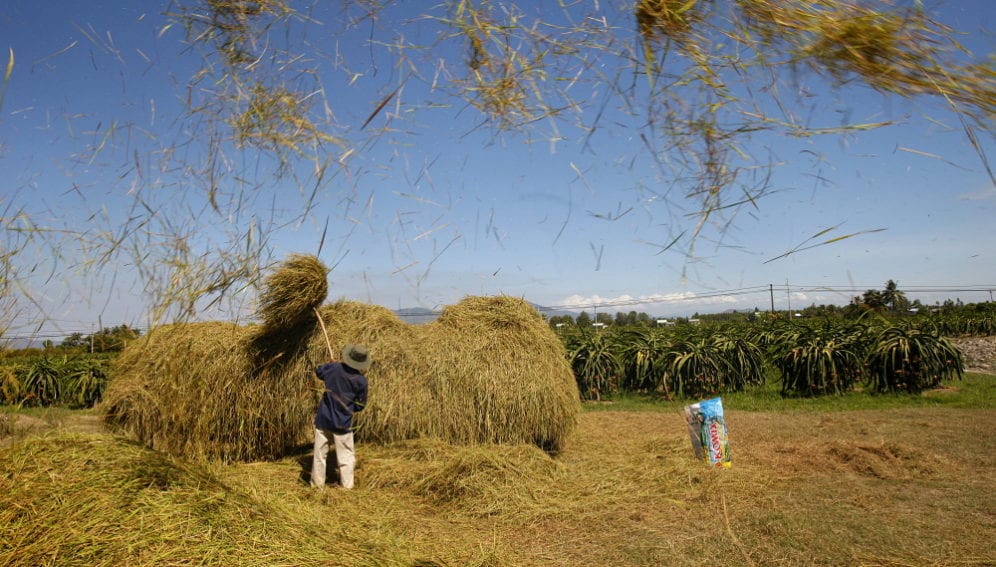By: Fatima Arkin
Send to a friend
The details you provide on this page will not be used to send unsolicited email, and will not be sold to a 3rd party. See privacy policy.
[BANGKOK] Agriculture experts say application of alternate wetting and drying (AWD) technology in Vietnam’s rice farms, one of South-East Asia’s largest rice-producing countries, holds great promise in cutting water use and greenhouse gas emissions from rice cultivation without sacrificing yield output.
Vietnam along with Bangladesh and Colombia recently partnered with the Climate and Clean Air Coalition (CCAC) to introduce the large-scale application of AWD, also known as controlled irrigation in which farmers periodically drain rice paddies rather than keeping them perpetually flooded. The number of non-flooded days can range from 1 to 10 days. The technology can reduce water use by 25 per cent and estimated to cut methane from flooded rice field by 50 per cent.
But getting farmers to adopt it will be a struggle, Nguyen Hong Son, vice-president of the Vietnam Academy of Agricultural Sciences, tells SciDev.Net during an interview at the Fourth International Rice Congress in Bangkok, Thailand (27 October to 1 November).
“It’s something that will give the farmers complications in application,” he notes. “It’s really hard for them to understand the benefits of reducing greenhouse gas emissions. We will try to convince them of the benefits of AWD since it can also help them save money in irrigation.”
Aside from economic savings through lower water consumption and pumping costs, there is also evidence that AWD can help crops perform better and improve soil conditions so that machines can operate more efficiently in the fields, says Björn Ole Sander, who is coordinating the effort.
But AWD is not without controversy. Adopting the irrigation method will increase nitrous oxide emissions, which Sander himself acknowledges will be anywhere from 20 to 100 per cent. Still, given that paddy rice does not produce much nitrous oxide to begin with, the decrease in methane, which the crop produces in heaps, will more than offset any increase in nitrous oxide, says Sander.
“We still have a huge overall reduction in greenhouse gas emissions,” he adds.
The planned wide-scale adoption of AWD is in line with the Vietnamese government’s commitment to reduce greenhouse gas emissions especially in the agricultural sector, which is predicted to account for almost 73 per cent of emissions in the country by 2030, according to a UN fact sheet produced in 2013.
The first phase to expand AWD in Vietnam as well as in Bangladesh and Colombia will run for the next 18 months and will involve preliminary research in each of the participating countries to identify the best areas where AWD can be applied, possible barriers and the needs for investment.
Representatives from the CCAC will soon hold roundtable working groups with various national stakeholders, including scientists.
A central information kiosk containing extensive information on rice management and greenhouse gas emissions will be hosted by the Philippines-based International Rice Research Institute, which along with the International Center for Tropical Agriculture in Colombia, will provide technical advice and services.
This article has been produced by SciDev.Net's South-East Asia & Pacific desk.














